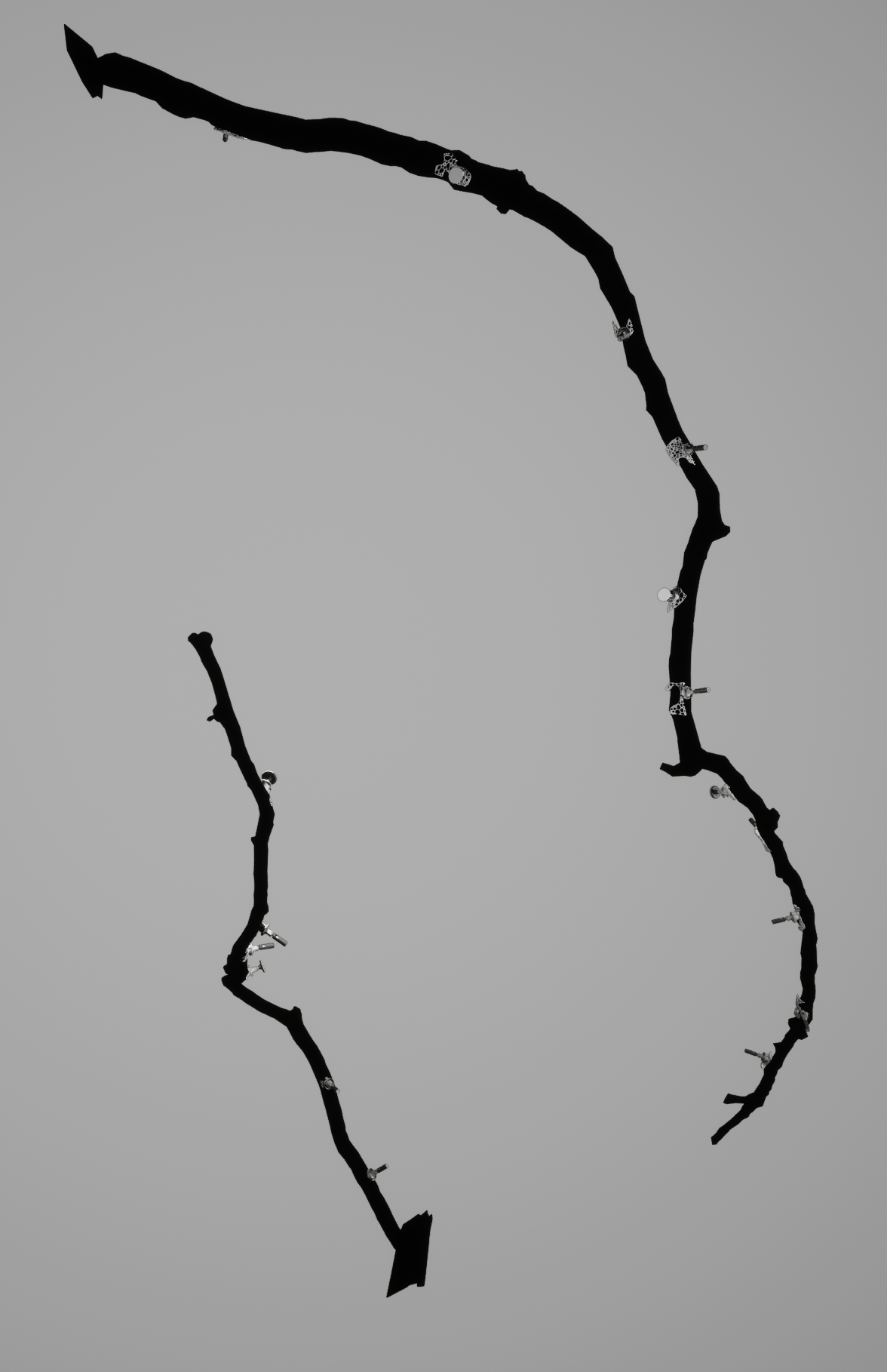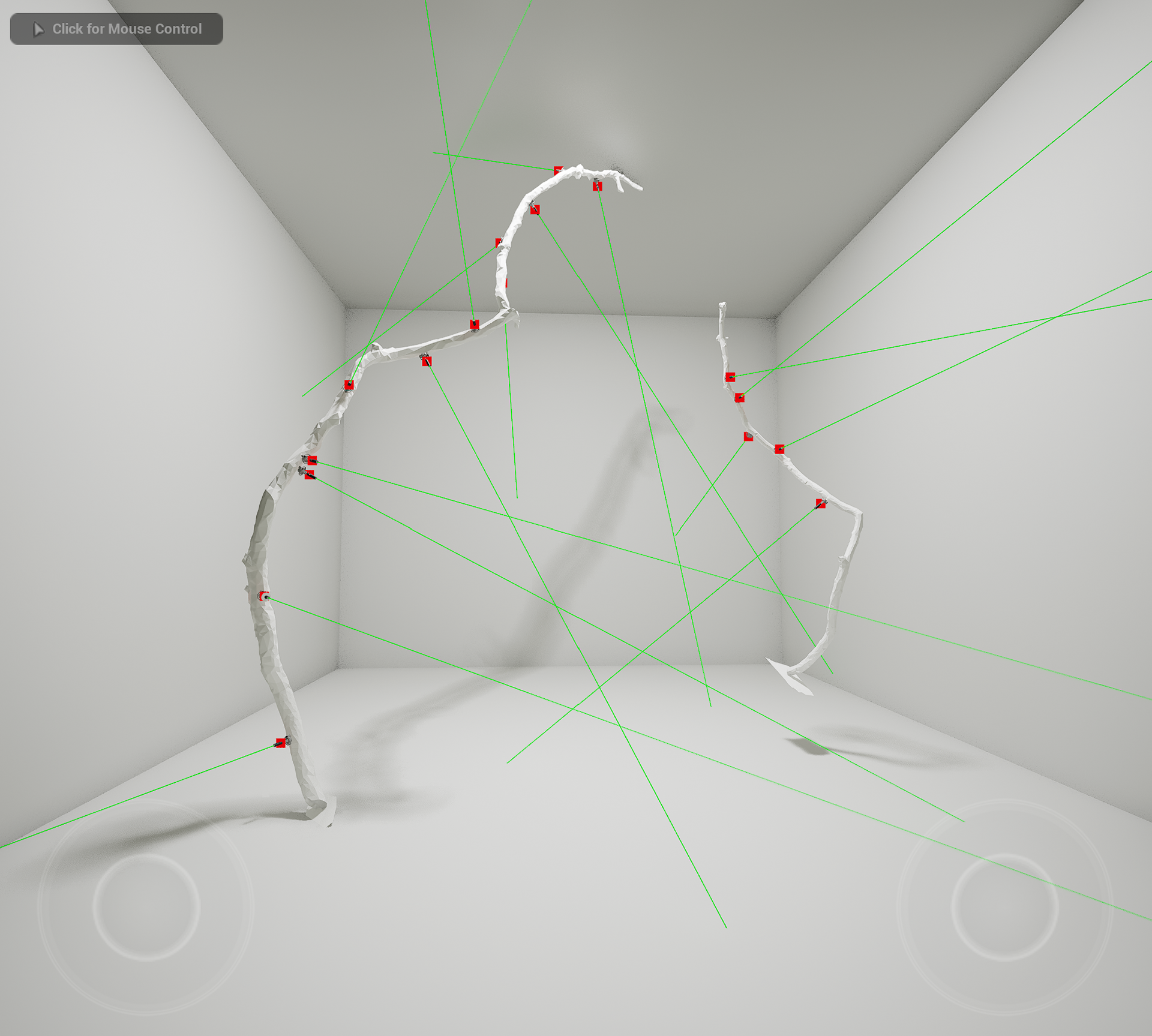Matteo Zamagni's Refracted Bodies
For Matteo Zamagni's debut solo exhibition, I provided design, 3d printing and installation support to realise two of Matteo's sculpture concepts incorporating green lasers.
For more information about Matteo's work visit:
https://alt-o.com/
For Matteo Zamagni's debut solo exhibition, I provided design, 3d printing and installation support to realise two of Matteo's sculpture concepts incorporating green lasers.
For more information about Matteo's work visit:
https://alt-o.com/
For more information about the exhibition and a full list of collaborators visit:
https://gazelliarthouse.com/exhibitions/166-matteo-zamagni-refracted-bodies/
The exhibition was recently featured in an article by the Financial Times here
https://gazelliarthouse.com/exhibitions/166-matteo-zamagni-refracted-bodies/
The exhibition was recently featured in an article by the Financial Times here
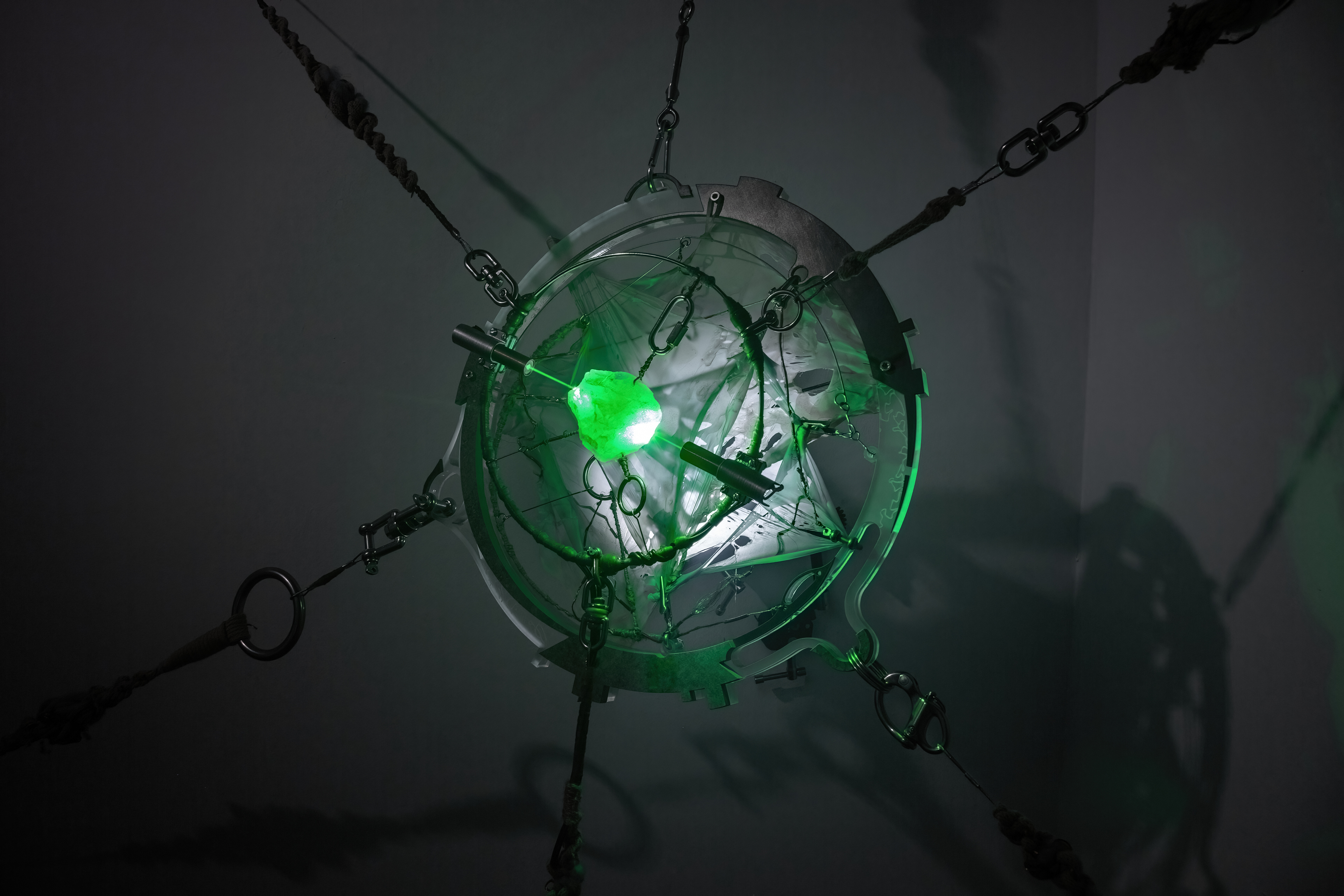
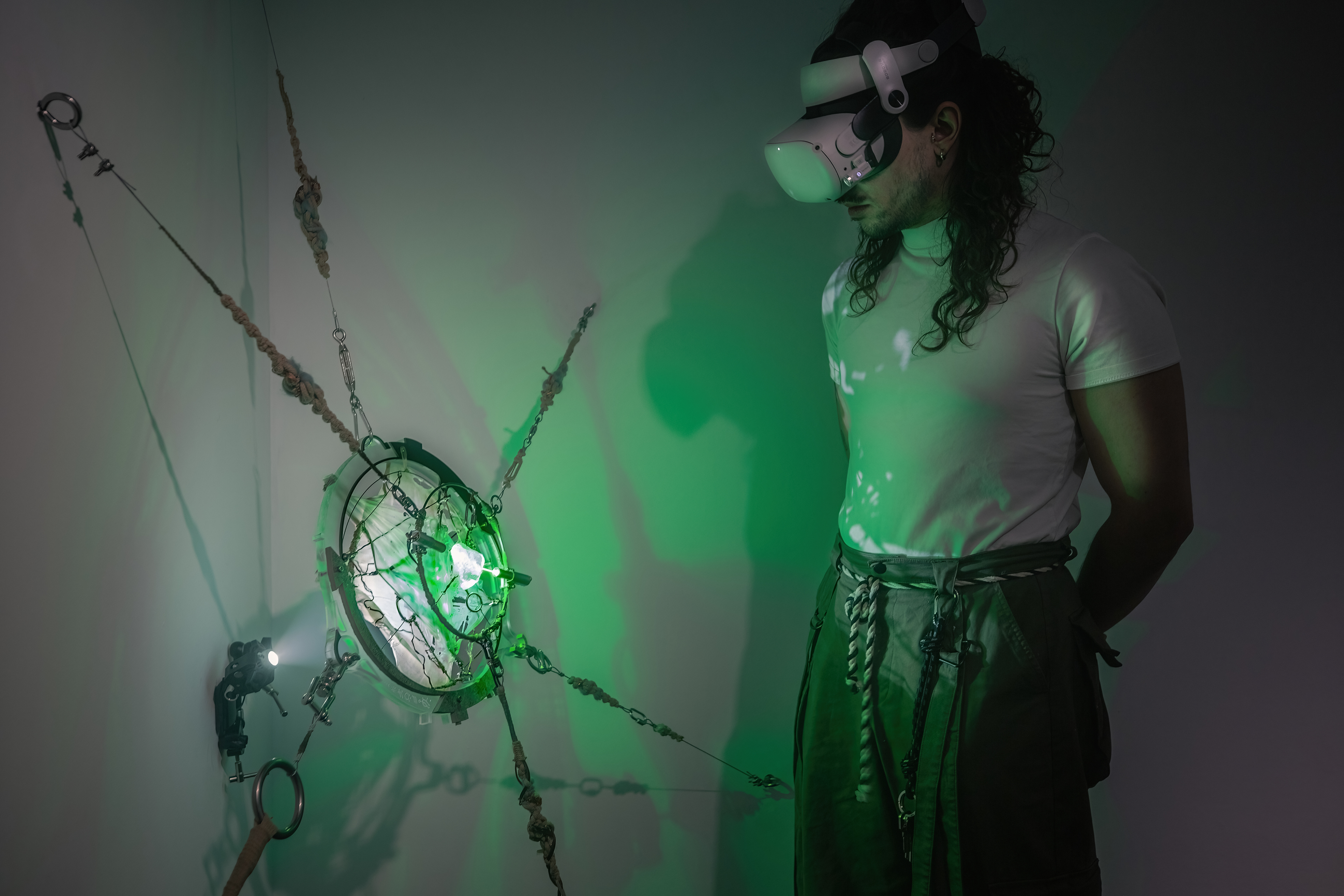
Supercluster
This sculpture features two fixed lasers inside 3d printed housings mounted to a stainless steel ring. The ring is fixed in front of ornamental pieces of waterjet cut mild steel, lasercut acrylic, latex among others and fixed to the gallery walls by steel wire rope. My role was to create a mount for the lasers.
Both lasers are pointed towards a shard of quartz where they create laser speckle - a scattering of the collimated beam by the quartz material which produces a noise-like texture. The viewer sees two slightly different textures in each eye. Our eyes rely on a number of cues to perceive depth in a scene; one of these is feature matching between the left and right views.
By creating a texture which does not have consistent cues between each eye, the viewer's loses their perception of depth when looking at the shape of the artefact, giving it a floating appearance.
Transposition
This sculpture consists of two branches fixed to the gallery walls by steel cables, with 3d printed rotary mounts which allow laser beams to be directed and reflected around the space. The beams are directed to create a portal shape between the two branches.
This sculpture consists of two branches fixed to the gallery walls by steel cables, with 3d printed rotary mounts which allow laser beams to be directed and reflected around the space. The beams are directed to create a portal shape between the two branches.
Matteo created a photogrammetric reconstruction of the gallery scene in VR which is aligned to its real-world counterpart so there is a blurring between the physical and digital elements of the exhibition.
The gallery scene including the original gallery, the sculptures and black sand covering the floor are reproduced in VR and the portal shape formed by the branches shows a gateway into other scenes including a photogrammetry scan of a cave and a procedural tunnel which the viewer can pass into by stepping through the gateway.
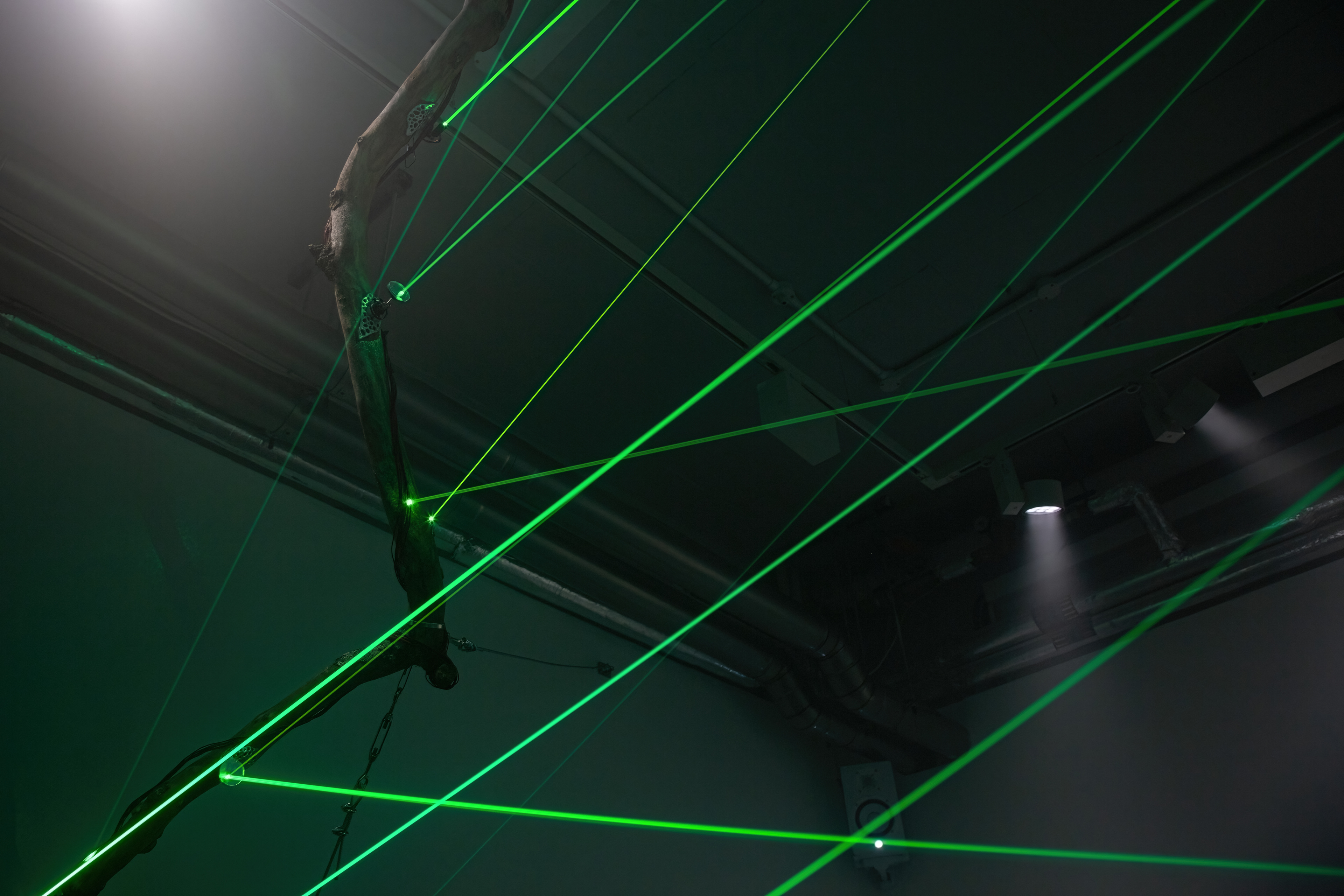

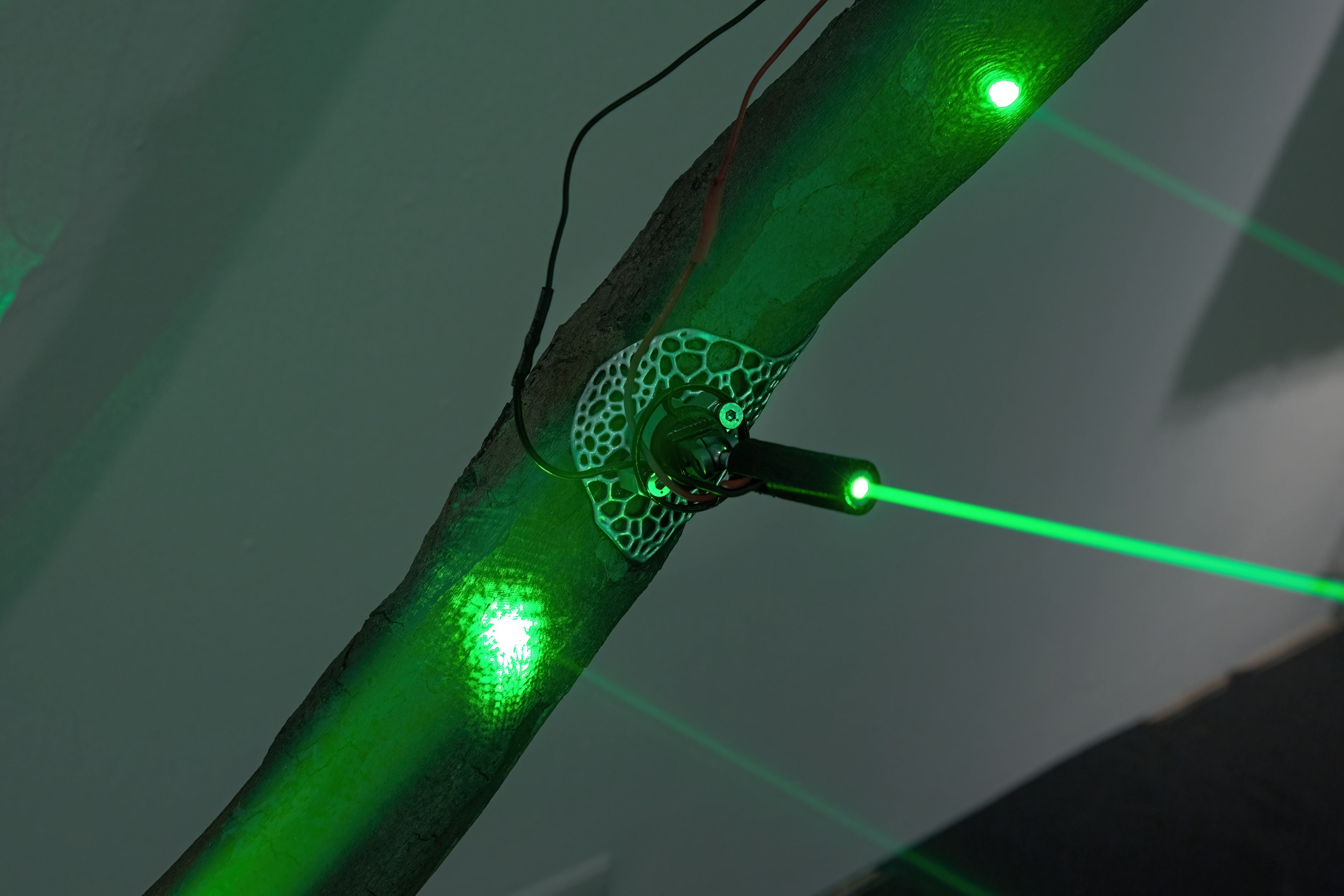
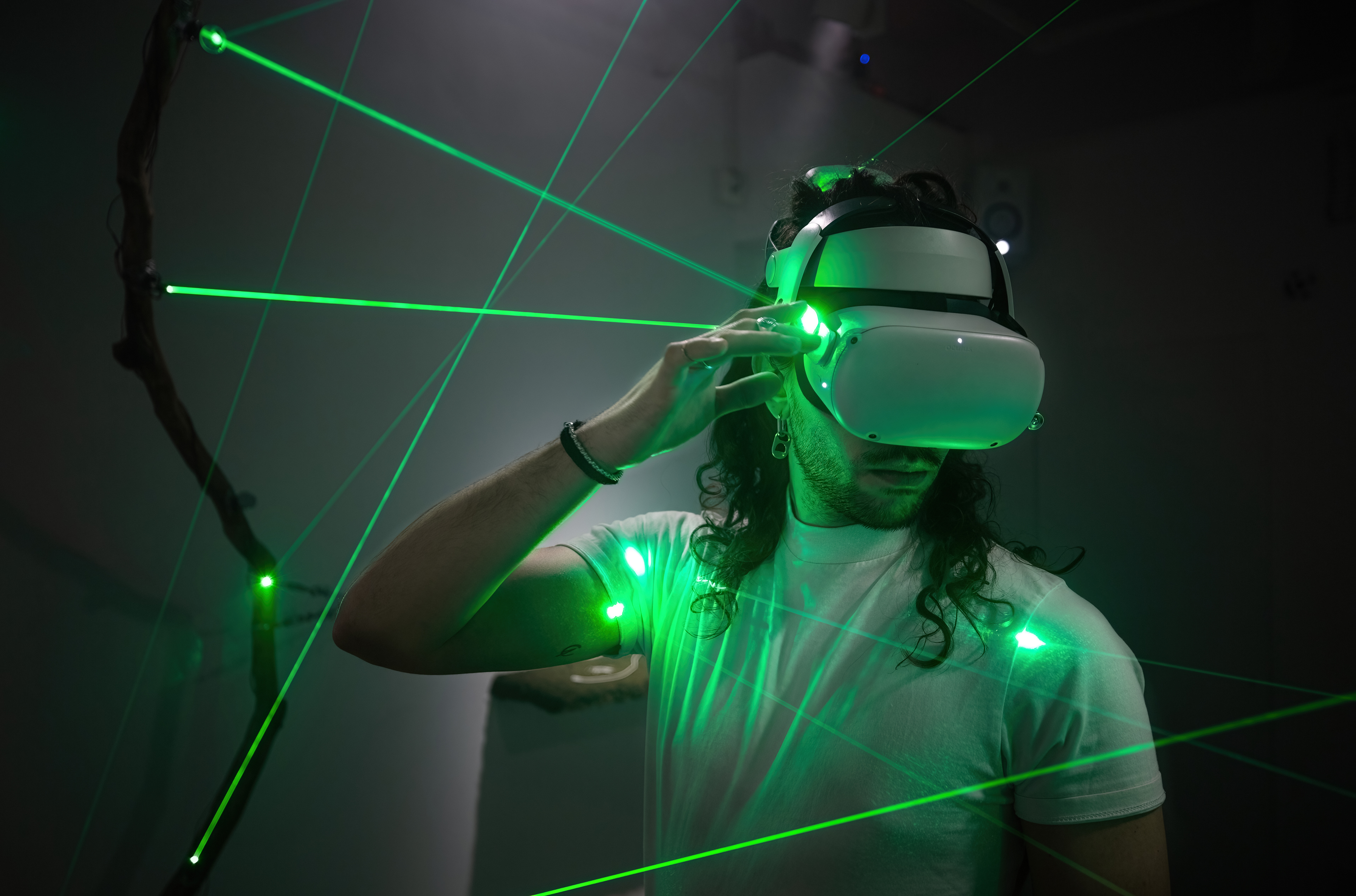
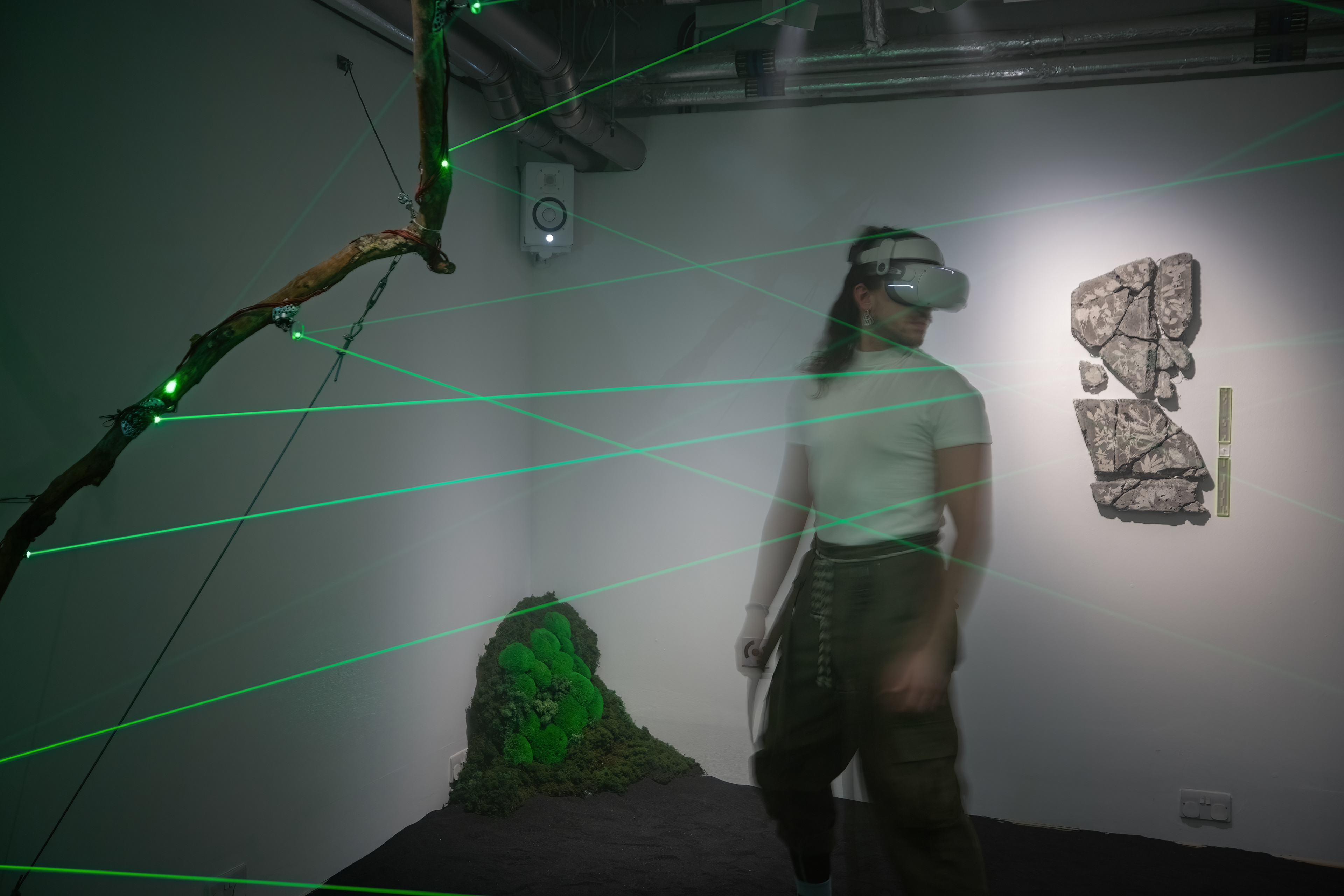
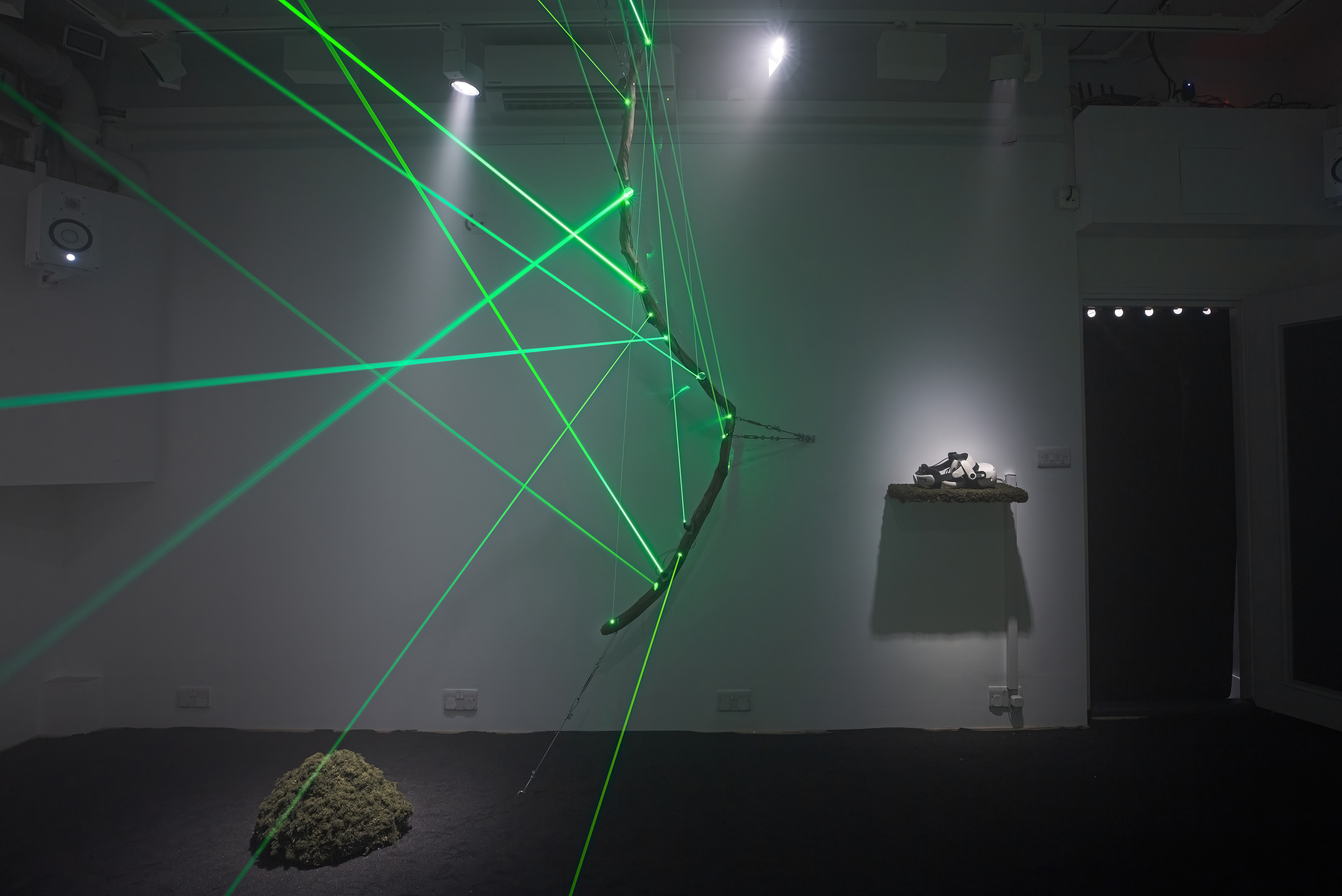
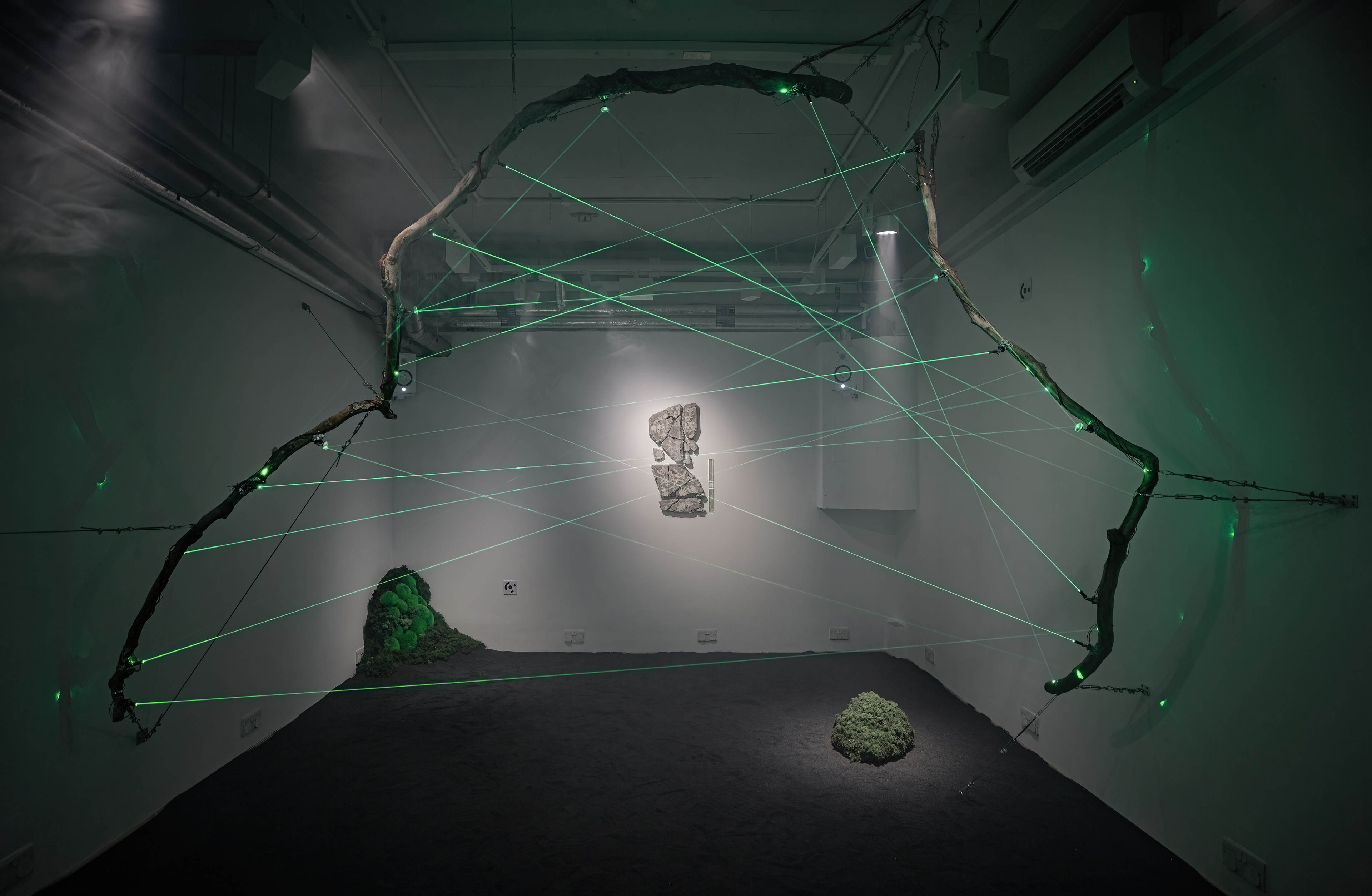
My role was modelling, 3d printing and installing 3d print parts to hold lasers and mirrors which could be adjusted to point at each other or directed at other parts of the branches. I integrated a 2 degree of
freedom mount design with organic inspired patterns procedurally modelled by Matteo from a photogrammetry scan of the branches, shaped to follow the contours of the branches.
Together, Matteo and I used Unreal Engine to create a digital twin of the sculpture where we could:
1 - prototype what the sculpture would look like once it is in the space and visualise a rough idea of laser pathways and hanging orientation prior to installing on site.
2 - place the digital twin in the same place in VR with the scan of the gallery and recreate the laser beams as they are in real life.
1 - prototype what the sculpture would look like once it is in the space and visualise a rough idea of laser pathways and hanging orientation prior to installing on site.
2 - place the digital twin in the same place in VR with the scan of the gallery and recreate the laser beams as they are in real life.






